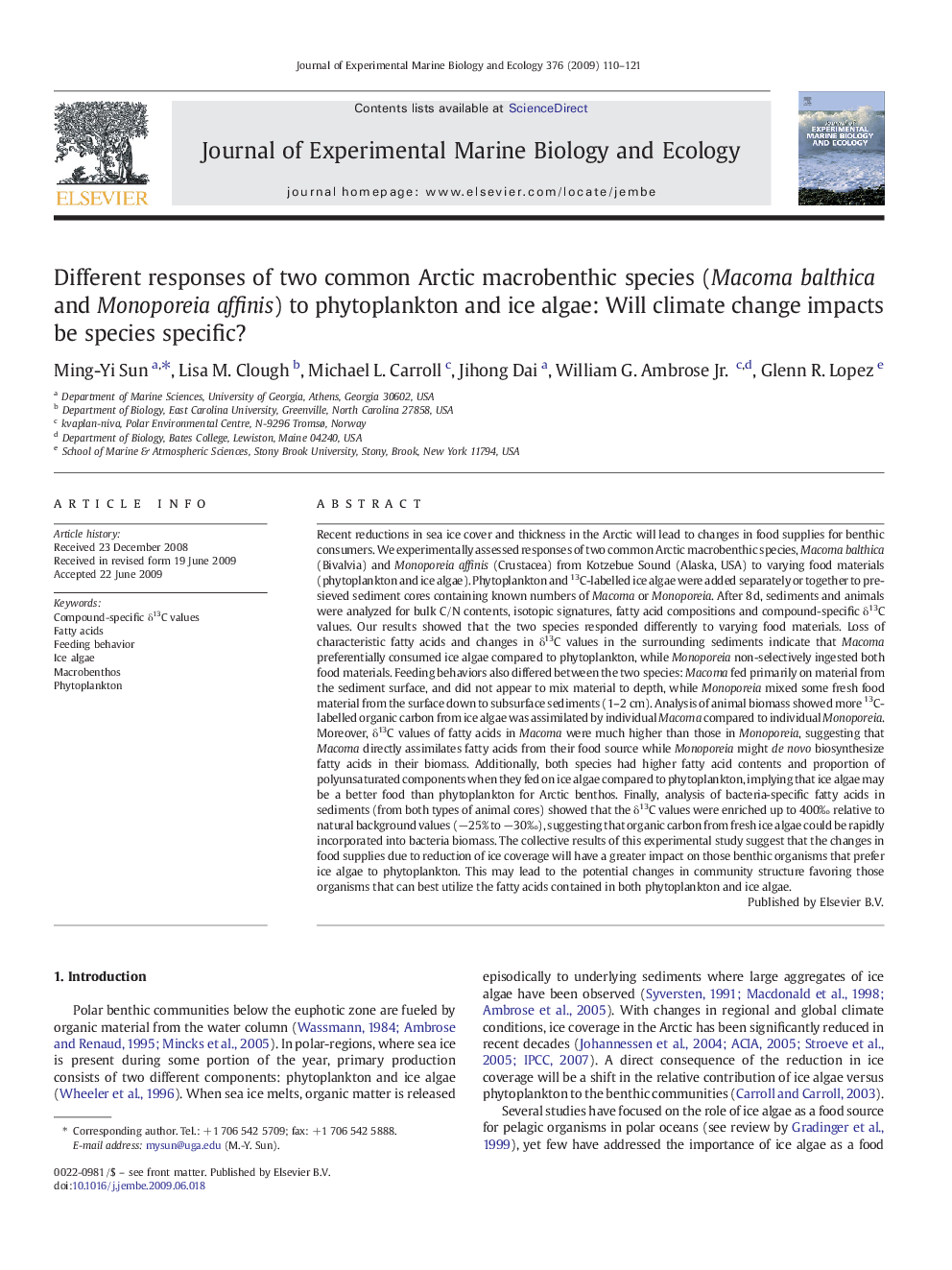| Article ID | Journal | Published Year | Pages | File Type |
|---|---|---|---|---|
| 4396947 | Journal of Experimental Marine Biology and Ecology | 2009 | 12 Pages |
Recent reductions in sea ice cover and thickness in the Arctic will lead to changes in food supplies for benthic consumers. We experimentally assessed responses of two common Arctic macrobenthic species, Macoma balthica (Bivalvia) and Monoporeia affinis (Crustacea) from Kotzebue Sound (Alaska, USA) to varying food materials (phytoplankton and ice algae). Phytoplankton and 13C-labelled ice algae were added separately or together to pre-sieved sediment cores containing known numbers of Macoma or Monoporeia. After 8 d, sediments and animals were analyzed for bulk C/N contents, isotopic signatures, fatty acid compositions and compound-specific δ13C values. Our results showed that the two species responded differently to varying food materials. Loss of characteristic fatty acids and changes in δ13C values in the surrounding sediments indicate that Macoma preferentially consumed ice algae compared to phytoplankton, while Monoporeia non-selectively ingested both food materials. Feeding behaviors also differed between the two species: Macoma fed primarily on material from the sediment surface, and did not appear to mix material to depth, while Monoporeia mixed some fresh food material from the surface down to subsurface sediments (1–2 cm). Analysis of animal biomass showed more 13C-labelled organic carbon from ice algae was assimilated by individual Macoma compared to individual Monoporeia. Moreover, δ13C values of fatty acids in Macoma were much higher than those in Monoporeia, suggesting that Macoma directly assimilates fatty acids from their food source while Monoporeia might de novo biosynthesize fatty acids in their biomass. Additionally, both species had higher fatty acid contents and proportion of polyunsaturated components when they fed on ice algae compared to phytoplankton, implying that ice algae may be a better food than phytoplankton for Arctic benthos. Finally, analysis of bacteria-specific fatty acids in sediments (from both types of animal cores) showed that the δ13C values were enriched up to 400‰ relative to natural background values (−25% to −30‰), suggesting that organic carbon from fresh ice algae could be rapidly incorporated into bacteria biomass. The collective results of this experimental study suggest that the changes in food supplies due to reduction of ice coverage will have a greater impact on those benthic organisms that prefer ice algae to phytoplankton. This may lead to the potential changes in community structure favoring those organisms that can best utilize the fatty acids contained in both phytoplankton and ice algae.
